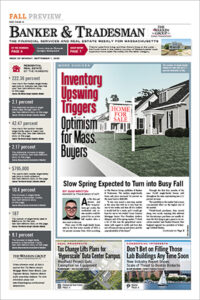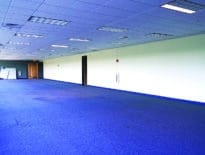
Despite a big supply-demand imbalance sending home prices through the roof, few observers today talk about the potential we’re in a housing bubble. iStock illustration
The last time home prices went on an epic tear, there was no escaping the talk of a real estate bubble.
Yale economist Robert Shiller first raised the prospect of a housing market bubble in a 2004 paper.
Then in 2007, a year before the bottom fell out of the real estate market, Shiller called it, predicting home prices would soon crash.
And they did – plunging by roughly 30 percent by June 2009, according to the Federal Reserve.
The real estate market recovery was sluggish at first, but by 2020, home prices had handily recovered from the Great Recession and were hitting new highs.
But then came the pandemic. Home prices over the past four years have gone absolutely bananas, both around the country but especially in Greater Boston, where the median price for a home is now approaching $1 million within the Interstate 495 belt, according to Banker & Tradesman’s publisher The Warren Group.
Statewide, the median home price hit $590,000 during the first five months of 2024, the company also said.
That, in and of itself, is an astounding number given it covers everything from Back Bay mansions to modest homes in small towns well outside of the Boston area’s orbit.
Meanwhile, home prices nationally posted their 11th consecutive monthly increase in May, rising nearly 6 percent to $419,300, according to the National Association of Realtors.
Yet despite meteoric increases, talk of a potential bubble in the real estate market has been far more muted than it was back in the mid-2000s.
Only a Few Big Names Warn
Shiller suggested last year that home prices might be poised to finally cool down. Somewhat counterintuitively, the economist argued prices had surged, even as sales fell, because buyers were scrambling to find a home and lock in rates before they went even higher.
Prices would then level off when the Fed finally stopped raising rates, Shiller argued.
Now it’s possible that Shiller’s prediction could still come true. But so far, the legendary economist’s latest prognostications have not held up well, with home prices soaring this spring, even as the Fed has pretty much signaled it is done with further hikes.
A few other lonely voices have been blunt in their warnings.
Jeremy Grantham, co-founder of Boston-based investment powerhouse GMO LLC, has been direct and dire in his prediction of where the real estate market is headed.
At a conference in Miami earlier this year, Grantham warned not just of trouble ahead for real estate in the U.S., but globally as well.
“In real estate, everything everywhere is in a dangerous bubble,” Grantham said, according to Business Insider.
Sheila Blair, who headed the FDIC before, during and after the Great Recession, when home prices fell by more than 30 percent, used the “B” word herself in an interview late last year.
“Talk about a bubble. That’s a classic supply-demand imbalance,” Blair told CNN of the big rise in the median price of a home in the U.S.

Scott Van Voorhis
The Consensus View: No Crash
But Shiller, Grantham and Blair are in the minority when it comes to their warnings that home prices, sooner or later, could be headed for a dangerous fall.
Most economists, while acknowledging the surge in home prices, contend the culprit is not crazed speculation by home flippers and mortgage companies, as it was in the mid-2000s.
And with post-Great Financial Crisis lending reforms, many of those economists also point to the ostensibly high quality of contemporary mortgage borrowers compared to those taking out the infamous subprime loans that played a starring role in our last crash. Today’s borrowers, so the thinking goes, are much better positioned to weather a recession than those 20 years ago.
Rather, the failure of new home construction to fully rebound after the Great Recession has led to a severe imbalance between supply and demand that has kept prices rising, even as sales have fallen.
Meanwhile, as bad as the supply imbalance is nationally, it is even worse in the Boston area, which is suffering the consequences of decades of underproduction in new housing.
Available listings are so scarce now that the last thing on buyers’ minds is whether there is a potential bubble brewing, said Sara Rosenfeld, a premiere broker at Coldwell Banker who is based in Somerville.
A top veteran broker with decades of experience, Rosenfeld said she can’t remember a time when there were so few listings under $800,000 coming on the market in the Boston area.
“I have highly qualified buyers in the $600-$800,000 range and it is a sad situation,” Rosenfeld said in an email. “They are not focused on a bubble concern when there’s so little to see!”
Scott Van Voorhis is Banker & Tradesman’s columnist and publisher of the Contrarian Boston newsletter; opinions expressed are his own. He may be reached at sbvanvoorhis@hotmail.com.





